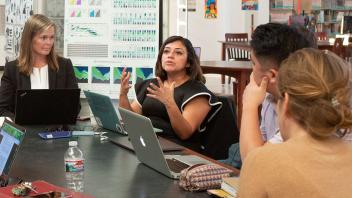As a reading specialist at an elementary school, I work with many children who experience difficulty with reading. While there are obvious celebrations during the year when students make great progress, there are also many frustrating periods as well, when we, as teachers, struggle to understand why our students aren’t reading. Recently, I had an experience which allowed me a unique glimpse into what goes on in the mind of a struggling reader.
Earlier this summer I received a bad concussion while riding my bike. One dramatic result of my concussion was that I lost all short term (and some long term) memory for a period of days. The days before and after the accident seemed to melt into a blur as the world rushed on around me.
People seemed to be talking extremely quickly, and I struggled to keep up with conversations. I had difficulty making the simplest inferences; unable, even, to connect pronouns with their respective nouns. Jokes were not funny, and I was oblivious of the worried glances, the body language, of those around me.
Once I was on the mend I began trying to read the newspaper and uneasily realized that I couldn’t comprehend any of what I read. I could decode the words, but couldn’t understand beyond the phrase level. As I read, the words didn’t evoke images. They were simply words run past my eyes, and I suddenly realized that this is how my students read!
As I envision it, a confident reader skims a newspaper article, nodding at the familiar parts, grumbling at the controversial parts. Each sentence stacks upon the previous one, like a carefully balanced group of Legos. By the time the reader is finished with the article, the Legos have combined to form a recognizable shape - the gist of the article.
I, on the other hand, was reading each sentence slowly, then carefully setting it aside. The words rang no bells, brought forth no pictures, they were simply words. By the time I was through with the article, I had a table full of Lego pieces carefully separated from each other. I had built nothing.
My short- and long-term memory problems didn’t allow me to dredge up my background knowledge, and I didn’t have the mental strength to compile the information as I was reading.
Fortunately, I’m reading much better now, though I fatigue easily. But I’m also left with a much clearerpicture of what struggling readers are going through. Background knowledge is critical!
If someone had attempted to tutor me while in my weakened state, they probably would have put the article aside and first talked at length with me about the topic. THEN we could have read the article, stopping after each sentence at first, to talk about how what I was reading related to what I already knew. It would have helped to draw a visual representation of what I was reading using a graphic organizer, such as a web, to show how the information was inter-connected.
Though this is not the preferable path to an epiphany, it has been an interesting one. Fortunately, most teachers will not have to undergo the task of recovering from a head injury. But for me, the experience was insightful.
I am just so grateful that this is a temporary condition. Imagine if I was forever doomed to be unable to comprehend what I read! And then I remember that there are so many children out there for whom reading is exactly this confusing. We must reach them before they give up.
